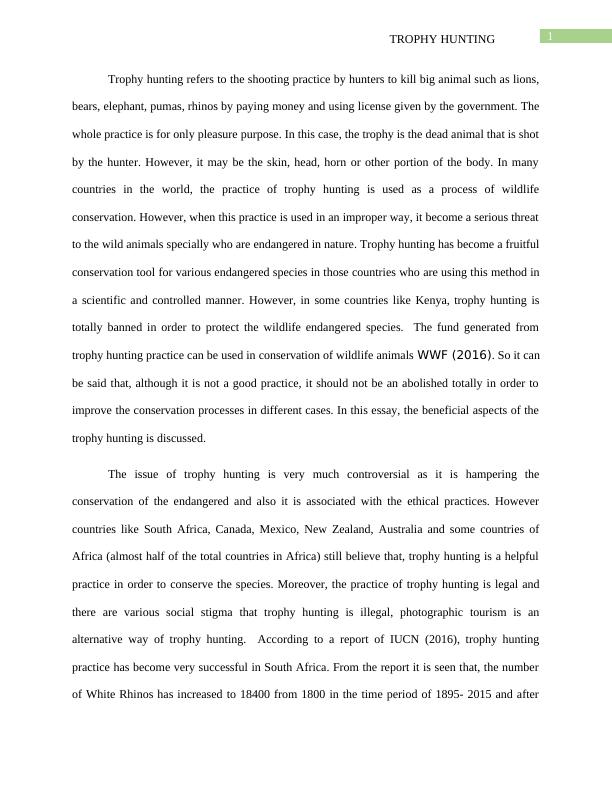Trophy Hunting: A Controversial Practice for Wildlife Conservation
Develop an annotated bibliography on a controversial topic with a minimum of 6 current sources.
10 Pages2298 Words215 Views
Added on 2023-06-04
About This Document
This essay discusses the controversial practice of trophy hunting for wildlife conservation. It explores the beneficial aspects of trophy hunting and its negative impacts on wildlife conservation. The essay also provides examples of countries where trophy hunting has helped in the conservation of endangered species. The subject is wildlife conservation, and the course code and college/university are not mentioned.
Trophy Hunting: A Controversial Practice for Wildlife Conservation
Develop an annotated bibliography on a controversial topic with a minimum of 6 current sources.
Added on 2023-06-04
ShareRelated Documents
End of preview
Want to access all the pages? Upload your documents or become a member.
Impact of Poaching on Wildlife and Environment
|6
|1473
|186
Policy Brief And Technical Report Analysis
|15
|3210
|15
Endangered Species: Importance, Legal Concerns, and Causes of Extinction
|13
|3986
|58
Conservation | National Geographic Society
|3
|495
|20
Health System in South Africa
|11
|2020
|1



